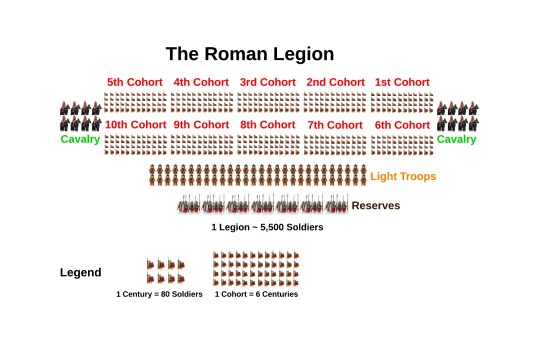Since Roman soldiers could no longer be counted on to be somewhat well-to-do,
or capable of bringing their own equipment, Marius had the Roman state
subsidize the cost (1). There were several specific changes to equipment
(mostly to due with the sort of weapons the Romans carried, such as the pilum)
but the main focus of this change was to standardize the Roman army. No more
lines of infantry separated by varying qualities of equipment or experience.
The Roman army standardized: cohorts of heavy infantry, identically equipped,
made up the core and backbone of the army (1).
 (In all its
glory.)
(In all its
glory.)
The changes to equipment added to the image of the Roman army as a highly trained, highly flexible fighting force. The nickname "Marius' Mules" is something anyone studying the Roman army will have come across, and the term generally refers to the sheer amount of equipment these legionaries had to carry (1). Tents, provisions, personal arms. These new soldiers were the best equipped soldiers in the Mediterranean and possibly the world, completely outfitted and prepared for extensive campaigns away from home.
The army was reorganized, again specifically away from age or gear required hierarchies. The Roman legion was divided into Cohorts, 10 per legion, each containing roughly 480 legionaries (1). The role of cavalry and light skirmishing infantry was given over to the auxiliary forces, soldiers made up of "allied troops and native soldiers" (1).
 (A visualization of the newly organized Legion)
(A visualization of the newly organized Legion)
The finished product was the army we now associate with Romans, the army that conquered the world.
 (In all its
glory.)
(In all its
glory.)The changes to equipment added to the image of the Roman army as a highly trained, highly flexible fighting force. The nickname "Marius' Mules" is something anyone studying the Roman army will have come across, and the term generally refers to the sheer amount of equipment these legionaries had to carry (1). Tents, provisions, personal arms. These new soldiers were the best equipped soldiers in the Mediterranean and possibly the world, completely outfitted and prepared for extensive campaigns away from home.
The army was reorganized, again specifically away from age or gear required hierarchies. The Roman legion was divided into Cohorts, 10 per legion, each containing roughly 480 legionaries (1). The role of cavalry and light skirmishing infantry was given over to the auxiliary forces, soldiers made up of "allied troops and native soldiers" (1).
 (A visualization of the newly organized Legion)
(A visualization of the newly organized Legion)The finished product was the army we now associate with Romans, the army that conquered the world.
 (We finish on a high note, with
Caesar leading his legions to glorious victory!)
(We finish on a high note, with
Caesar leading his legions to glorious victory!)